> d
[,1] [,2]
1 -0.5561835 1.49947588
2 -2.3985544 3.07130217
3 -3.8833659 -4.29331711
4 3.1025836 5.45359160
5 0.7438354 -2.80116065
6 7.0787294 -2.78121213
7 -1.6633598 -1.17898157
8 -0.6751930 0.03466162
9 1.4633841 0.50173157
10 -3.2118758 0.49390863
The above table gives the x(1st column) and y(2nd column) coordinates of the plot i want to plot.
require(MASS) # for sammon using which i generated the above coordinates
require(deldir) # for voronoi tessellations
dd <- deldir(d[,1], d[,2]) # voronoi tessellations
plot(dd,wlines="tess") # This will give me tessellations
I want my next tessellations to be plotted in one region in the above tessellation. I can get the lines that form the tessellations using dd$dirsgs. In this each line that is there in the tessellation is given with their end points. The first four columns of this gives the x1,y1 and x2,y2 coordinates respectively. These coordinates are the end points of the line. Using this data can I plot the next sub-tessellation within this one region in the above tessellation.
For the next sub-tessellation, you can generate the coordinates of your choice. But I just want them to be in one region of the above plotted tessellation.
ind 1 and ind2 in the dd$dirsgs gives the points in 'd' which are separated by the line represented by the first 4 columns of dd$dirsgs.
For example, if we want to plot the sub-tessellation in the plot containing the first point in d, then the rows 1,2,9,12,17 are the rows that form the boundary for the first point in d. Using this information, can we plot the sub-tessellation within this region? –
I think I have covered all the things that are requisite to understand my problem. If there is any more data which I have not included then please let me know. I will give the information.



